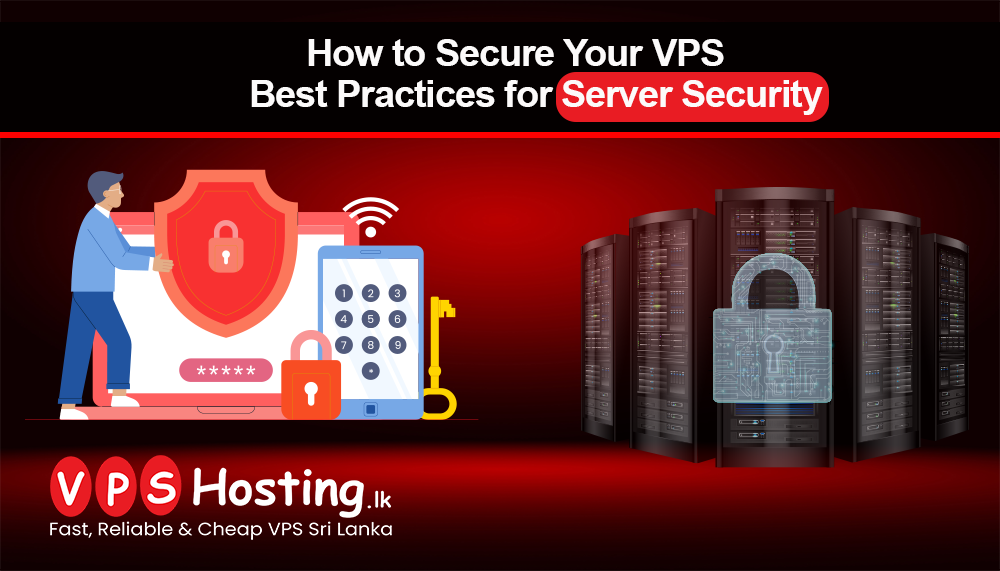
How to Secure Your VPS: Best Practices for Server Security
When you use a Virtual Private Server (VPS), you get great speed and flexibility. But with that power comes responsibility. A VPS is exposed to the internet, so if it’s not secured, attackers might exploit it. In this guide we’ll show clear and simple steps you can take to keep your server safe and stable. This guide explains simple and important steps to secure your VPS and keep your websites and applications safe.
1. Keep Software Updated
Out‑of‑date software is one of the easiest ways attackers get in. Make sure your operating system, control panel (cPanel, Plesk, etc), and any other tools are up to date.
-
Update your operating system regularly.
-
Keep your control panel (cPanel, Plesk, DirectAdmin) updated.
-
Apply security patches as soon as they come out.
-
Remove or disable software you don’t use.
-
Use only trusted repositories and check for updates regularly.
2. Use Strong Passwords & Limit Access
Weak passwords make it easy for hackers to guess or brute‑force their way in.
-
Use long passwords (12+ characters), with a mix of letters, numbers and symbols.
-
Avoid dictionary words or easily guessed names.
-
Change default passwords given by your hosting provider.
-
Limit root or administrative access: only grant it if absolutely needed.
3. Enable Two‑Factor Authentication (2FA)
Adding 2FA means logging in requires something you know (your password) and something you have (a code, or a device). This drastically reduces risk if a password is compromised.
Many VPS providers (including ours) support 2FA for control panels and server logins. Activate it ASAP (as soon as possible).
-
Enable 2FA on your VPS control panel.
-
Enable 2FA for SSH or remote login if supported.
-
Use authenticator apps instead of SMS when possible.
Even if someone gets your password, 2FA will stop them from logging in.
4. Use Firewalls & Control Traffic
A firewall is your first line of defence for your VPS. It monitors and filters incoming/outgoing traffic.
-
Block unused ports and only allow the traffic your site/services need.
-
Whitelist IPs when possible (for SSH, admin panels).
-
Monitor logs and look for unusual access patterns.
-
Consider adding a hardware or network‑level firewall if available.
5. Secure SSH and Remote Access
If you access your VPS remotely (SSH on Linux, RDP on Windows), these should be locked down:
-
Change the default SSH port (e.g., from 22 to something else) to avoid automated attacks.
-
Disable root login via SSH and use a dedicated admin account.
-
Use SSH keys rather than only passwords for access.
-
Optionally restrict login by IP address or enable 2FA for SSH.
6. Backups & Disaster Recovery
Even with the best precautions, things can go wrong — hardware failure, software bugs, or security breaches.
-
Make regular backups of your data and server configuration.
-
Store copies off‑site or in a different location.
-
Test your backup restoration process so you know it works.
-
Have a plan: if your server gets compromised, you should know how to restore clean.
7. Monitor, Audit & Log Activity
-
Keeping an eye on your server helps you catch problems early:
-
Enable system logs: login attempts, firewall hits, resource usage.
-
Use monitoring tools to alert you when something odd happens (high CPU, strange traffic, many failed logins).
-
Periodically review logs and access patterns — look for unfamiliar IPs, spikes, or unauthorized changes.
Consider automatic intrusion‑detection tools to help spot threats.
8. Limit Installed Services & Use Least Privilege
-
Running only what you need reduces your attack surface:
-
Remove unnecessary web services, daemons or software.
-
Use containers or isolated environments when possible.
-
Grant each user only the permissions they need (the principle of least privilege).
-
Review user accounts and scheduled tasks periodically.
9. Use Encryption and Secure Connections
-
Use SSL/TLS certificates for your websites to encrypt data in transit.
-
Use secure protocols (SFTP instead of FTP, SSH instead of telnet).
-
Encrypt sensitive data at rest (where possible) to protect stored data.
-
Avoid sending admin credentials or sensitive info over plain (unsecured) networks.
10. Plan for Emerging Threats & Stay Informed
-
Cyber threats evolve: new vulnerabilities, botnets, ransomware etc.
-
Subscribe to security newsletters or follow trusted blogs.
-
Keep aware of common threats targeting VPS setups (DDoS, brute force, zero‑day vulnerabilities).
-
Update your security strategy periodically.
-
Train your team or users: phishing attacks, social engineering, and safe practices matter.
Conclusion
Securing your VPS is not a one-time task — it’s an ongoing process. By keeping your server updated, restricting access, enabling 2FA, and following the practices above, you can significantly reduce risk and keep your VPS running smoothly.
At vpshosting.lk, we offer high-performance VPS servers with fast SSD storage, strong network security, optional DDoS protection, automated backups, and 24/7 expert support.
If you need help securing or optimising your VPS, our team is always ready to assist.